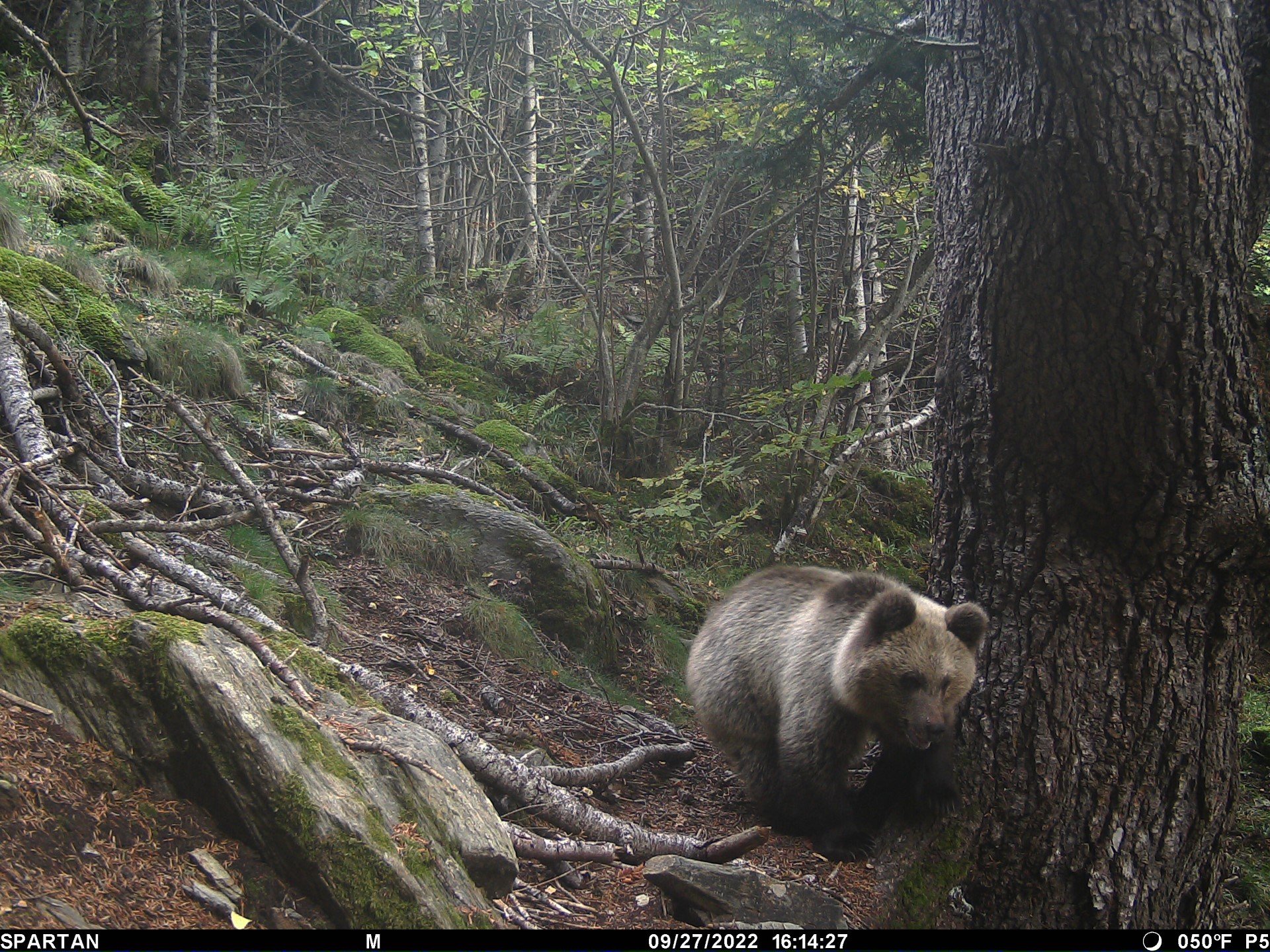The bear population in the Pyrenees continues to grow and currently stands at 76 brown bears, after the birth of 13 new cubs in 2022, as reported by the Transfrontier Monitoring Group for Bears in the Pyrenees (GSTOP). After releasing its annual survey of the population of brown bears, Ursus arctos, in 2022, the group has counted a population of 76 individuals in the Pyrenees, a figure that confirms that the population of this animal continues to grow since the reintroduction of the species to the Pyrenees in 1996. The population has risen steadily in the last two years from 68 specimens in 2020 to the current 76.
A total of 13 new cubs from eight different females were recorded in 2022, the highest number recorded after 2020 and 2021. Specifically, four of the females that have reproduced - and six of the cubs - are in the mountainous north-west of Catalonia: by name, the mothers Bambou and Aran, in the Val d'Aran, have had 2 cubs each; meanwhile, in the nearby Pallars Sobirà, mama bears Boavi and Plume have had one cub each; while across the border in France, no less than four mothers - Callisto, Gaia, Reglisse and New18-11 - have had a total of 7 cubs. GSTOP points out that these cubs have been conceived with six different males, which means that "a significant exchange of genetic information is beginning to occur between the breeding individuals of the population".

As for the sex balance of the population identified and counted in 2022, there are 39 females and 35 males, with the sex of two bears unidentified. Of the 76 specimens, 39 (51.5%) are adults, 24 (31.5%) are sub-adults and 13 (17%) are cubs under a year old. Of the 13 cubs, there are 6 females, 5 males and 2 of unknown sex. The geographical area of presence of the brown bear in the Pyrenees comprises a total of 5,700 km², which has fallen by 800 km² compared to the year 2021 and by 2,500 km² compared to the year 2020. This reduced estimate is due to the fact that there are no bear specimens with satellite tracking, as reported by GSTOP.
Thus, between the years 1996 and 2022, a total of 128 cubs from 71 litters were born. As for specimens reported as dead or missing during the year 2022, the figure is six. This count includes those bears for which there has been direct evidence of death, or no sign of life over a two year period. Of the 16 cubs born in 2021, 11 (68.75%) survived the first year and were detected during 2022.

Brown bear population in Cataloniaa
In Catalonia, 38 brown bear individuals have been detected in Val d'Aran, Pallars Sobirà and Alta Ribagorça, the three High Pyrenean counties of Catalonia's extreme north-west. There is still evidence of the females Caramellita and Bambou, born in 2002 and 2007, respectively, and other younger females. In addition, the presence of three males in Alta Ribagorça is confirmed: Sardo, New20-03 and New20-02. Thus, the final count of the Catalan and Aranese area is 21 adults, 11 sub-adults and 6 cubs, distributed by sex as 20 males, 17 females and 1 cub of sex not yet determined.
With regard to the monitoring of the species in Catalonia and the Val d'Aran, during 2022, 1,146 bear indications have been collected, corresponding to 770 different contacts. The most common sign found are hair samples (440), photos in installed cameras (413) and collected droppings (170). There have also been 37 physical observations. A total of 2,584 signs or traces have been detected throughout the Pyrenees, on both sides of the ranges.

Above, part of the Family Tree for the Brown Bear population in the Catalan Pyrenees, from 2019. The first bears were re-introduced into the area in the 1990s. Boavi and Plume, whose names are both visible on the chart, are two mothers who have given birth to new cubs in the last year.

